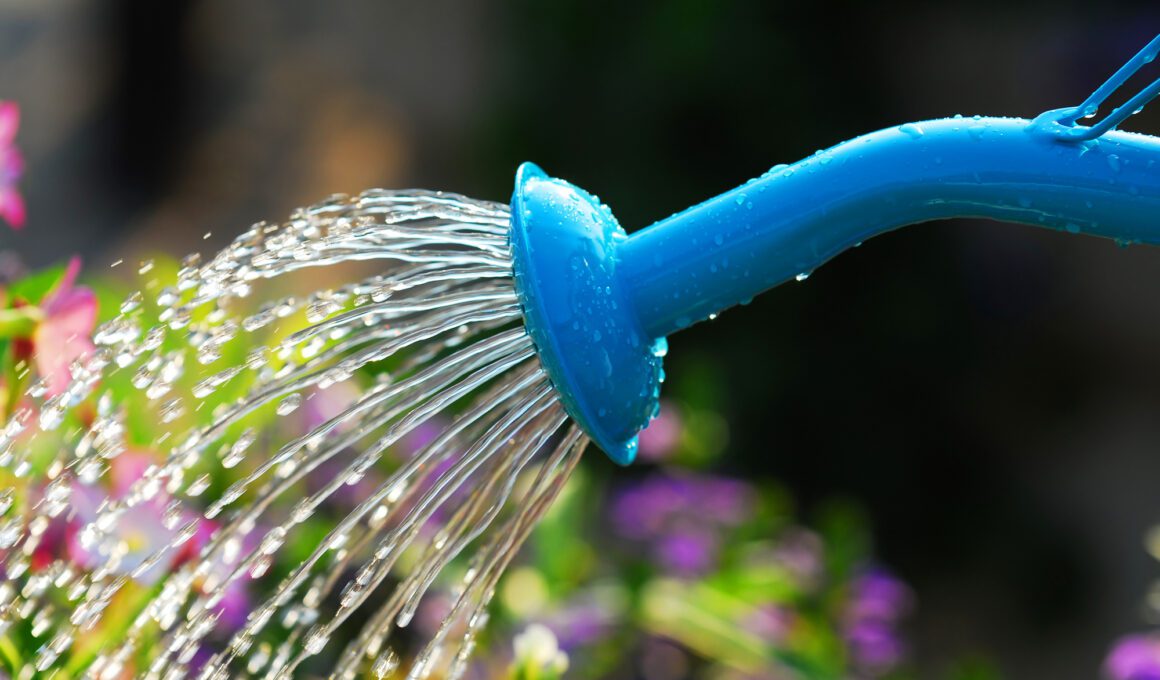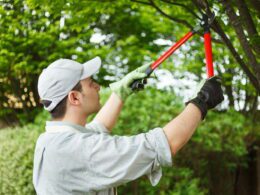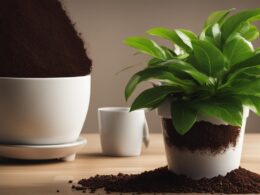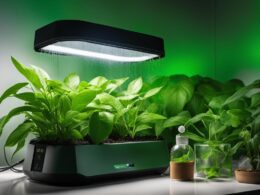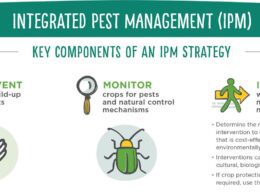Summer’s here and we’re all excited to bask in the sunshine and enjoy our beautiful gardens. But with the scorching sun comes a challenge: keeping your garden healthy, hydrated, and blooming throughout those hot summer months!
Fear not! We’ve got you covered with some essential watering tips that’ll ensure your plants stay safe from drought-related stress.
In this article, we’re going to tell you everything you need to know about proper watering techniques for your flowers, shrubs, and even those juicy tomatoes growing in your backyard.
With these easy-to-follow steps, you’ll be able to quench your garden’s thirst while maintaining a sense of safety during the warmest time of the year.
So grab a cool drink, sit back, and read on – it’s time to make sure your green oasis stays looking lush all season long!
Understanding Your Plant’s Water Needs
When it comes to keeping your garden healthy and hydrated during the summer months, understanding your plants’ water needs is crucial.
Each plant has different requirements when it comes to hydration, so you’ll need to familiarize yourself with each type in your garden. By learning about their specific needs, you can ensure that they receive the right amount of water at the right time – this will not only help them grow strong but also provide a sense of security as you nurture them.
One way to learn about your plants’ watering needs is by doing some research online or consulting gardening books. You may discover that certain plants prefer less frequent, deep watering while others thrive on more regular, lighter watering sessions.
It’s important to remember that over-watering can be just as harmful as under-watering! Too much moisture might cause root rot or other fungal diseases which could endanger your precious plants.
As summer approaches and temperatures rise, adjusting your watering schedule becomes even more essential for maintaining a safe and thriving garden environment. Keep an eye on weather forecasts and adjust accordingly – if there’s a heatwave coming up, make sure you’re prepared to give your thirsty plants extra attention!
And don’t forget about mulching; adding a layer of organic material around the base of each plant helps retain moisture and keeps roots cool in hot weather.
With these tips in mind, you’ll have no trouble giving your garden the care it requires all summer long!
The Best Time To Water Your Garden
Early morning is the best time to water your garden. The dew in the morning helps keep the soil moist and can help prevent fungus growth.
Deep watering your garden infrequently is better than shallow watering it multiple times. This will help the roots of the plants get the water they need.
To get the most out of your water, wait ’til the sun is up. This’ll help the water absorb into the soil better.
It’s also important to check the moisture level of the soil before watering. That way, you know how much water your garden needs.
Early Morning
Imagine waking up to the sound of birds chirping, and as you step outside, you’re greeted by a cool breeze and the refreshing sight of your garden’s dew-covered leaves. That’s right – early morning is one of the best times to water your garden!
It can be tempting to hit that snooze button, but getting up before the sun gets too hot will ensure that your plants stay healthy and hydrated throughout those sweltering summer days.
Watering in the early morning hours allows for better absorption into the soil, giving your plants’ roots a chance to soak up all that life-giving moisture. This way, they’ll be well-prepared for a day of sunshine and heat without wilting or drying out.
Plus, it reduces evaporation rates so more water reaches your plants instead of being lost to the air. And since we’re talking about safety here, an added bonus is that watering in the cooler temperatures means less stress on both you and your precious greenery!
So set that alarm clock just a tad bit earlier than usual and make sure to grab a hat and some sunscreen while heading out into your garden oasis! Your plants will thank you with lush growth and vibrant blooms all summer long.
Trust us; when you see how happy (and safe) they are after their early-morning drink, it’ll be worth every minute spent tending to them during those peaceful dawn hours.
Morning Dew
Now, you might be wondering about that lovely morning dew we mentioned earlier. Well, it plays a pretty important role in keeping your garden hydrated too!
You see, when the temperature drops overnight, moisture condenses on plant leaves and the ground around them. This natural process provides some extra hydration for your plants before they even get their daily dose of water from you.
As you step out into your early-morning garden retreat, take a moment to appreciate the delicate beauty of those tiny droplets glistening on each leaf. Not only does this sight make waking up early worthwhile, but it also gives you peace of mind knowing that nature is working hand-in-hand with you to protect and nourish your cherished plants.
So go ahead and give them an extra splash of water to supplement that refreshing dew – together, you’ll ensure a safe haven where they can thrive all season long.
In conclusion, combining the goodness of morning dew with timely watering sessions creates the perfect environment for your garden’s health and safety. Don’t forget to enjoy these tranquil moments as you nurture your plants – after all, gardening is not just about tending to their needs; it’s also about finding solace in our connection with nature itself.
Infrequent Deep Watering
Now that we’ve covered the benefits of morning watering and the role of dew, let’s delve into another essential aspect of maintaining a healthy garden: infrequent deep watering.
You might be thinking, ‘Wait, isn’t more water better for my plants?’ Well, not necessarily! In fact, providing your plants with less frequent but deeper watering sessions can work wonders for their overall well-being.
Here’s the deal – when you water your plants deeply and less often, it encourages their roots to grow deeper into the soil in search of moisture. This means they’ll have access to more nutrients and will be better equipped to withstand dry spells or harsh conditions.
So instead of just skimming the surface every day, give your plants a good soak once or twice a week – trust us, they’ll thank you for it!
By incorporating this approach alongside your daily morning routine and taking advantage of nature’s gift in the form of morning dew, you’re creating an incredibly safe haven where your cherished garden can flourish all season long.
Keep up the great work; you’re truly nurturing both your green sanctuary and yourself through this beautiful connection with nature.
Efficient Watering Techniques
You might be thinking that efficient watering techniques sound complicated or time-consuming, but don’t worry! There are simple ways to ensure your garden gets the water it needs without wasting a drop. Not only will you save money on your water bill, but you’ll also help protect our planet’s precious resources.
One technique for efficient watering is to use drip irrigation systems. These systems deliver water directly to the roots of your plants through small tubes and emitters. This allows you to control how much water each plant receives while reducing evaporation loss. Additionally, since these systems can be set up with timers, they offer an ideal solution for busy gardeners who may not have time to hand-water their gardens every day.
Another great way to conserve water in your garden is by collecting rainwater using barrels or buckets placed under downspouts from your roof. Rainwater is free and often better suited for plants than tap water because it doesn’t contain chemicals like chlorine or fluoride. Once collected, this natural resource can be used to hydrate your thirsty plants during dry spells – just remember to cover containers when not in use to prevent mosquito breeding.
So go ahead and give these tips a try – they’re easier than you think, and both your garden and the environment will thank you!
Watering Containers And Pots
When it comes to watering containers and pots, there are some key differences that you need to be aware of. Unlike plants in the ground, container plants have limited space for their roots to spread out and access water. This means they can dry out more quickly, especially during hot summer months when evaporation rates are high. It’s important to strike a balance between providing enough moisture for your potted plants while also avoiding overwatering which can lead to root rot.
Here are three tips on how best to water your containers and pots:
- Check soil moisture frequently: Stick your finger about an inch into the soil; if it feels dry, it’s time to water.
- Water deeply but less frequently: Thoroughly drench the potting mix until water runs out of the drainage holes at the bottom of the container. This ensures that all parts of the root system get access to water.
- Use a saucer or tray under pots with drainage holes: This allows any excess water to collect underneath, preventing messes and helping maintain a consistent level of moisture in the soil.
By following these simple guidelines and paying attention to your plants’ needs, you’ll ensure they stay healthy throughout those scorching summer days.
Remember that different types of plants may require varying amounts of water depending on factors such as size, species, sun exposure, and individual preferences. Be sure to tailor your watering strategy accordingly by researching each plant’s specific requirements so they’ll thrive in their cozy containers all season long!
Conserving Moisture With Mulch
Did you know that mulching your garden can help reduce water evaporation by up to 70%?
That’s right! Using mulch is an excellent way to conserve moisture in your garden and keep your plants healthy during the hot summer months. Mulch helps maintain a consistent level of moisture in the soil, which means less frequent watering and reduced stress on your plants.
There are many types of mulch available, including organic options like wood chips, straw, or grass clippings, as well as inorganic choices such as gravel or rubber.
Organic mulches not only help retain moisture but also break down over time, adding valuable nutrients back into the soil. When choosing a type of mulch for your garden, make sure it matches the needs of your specific plants and overall landscape design.
Applying mulch is simple – just spread a layer about two inches thick around the base of your plants, being careful not to cover their stems or trunks. This will create a barrier between the sun and the soil surface, preventing rapid evaporation and keeping plant roots cool.
As temperatures rise throughout the summer season, you’ll be grateful for this extra protection that keeps your precious green friends hydrated and nourished without needing constant attention from you when it comes to watering them every day.
So go ahead and give mulching a try – both you and your garden will benefit from this eco-friendly practice!
Utilizing Drip Irrigation Systems
One of the best ways to keep your garden healthy and hydrated during the hot summer months is by utilizing a drip irrigation system. These systems are designed to deliver water directly to the roots of your plants, ensuring that they receive just the right amount of moisture without wasting any precious resources. In addition, this method helps conserve water by reducing evaporation and runoff.
A properly installed drip irrigation system can make all the difference in the world when it comes to maintaining a lush, vibrant garden throughout the season.
Here’s what you need to know about setting up one for your own outdoor space:
- Determine which type of system will work best for your needs
- Soaker hoses: made from porous materials that allow water to seep out slowly along their entire length, perfect for watering rows of plants or large areas
- Drip tape or tubing: thin plastic tubes with small holes spaced at regular intervals, ideal for delivering precise amounts of water directly to individual plant roots
- Emitter systems: use small devices called emitters placed near each plant, providing customizable flow rates tailored specifically to different types of plants
With these options in mind, take some time to evaluate your garden and choose an appropriate system based on its size and layout. Remember that investing in a good-quality drip irrigation setup now can save you both time and effort later down the line as well as provide peace-of-mind knowing that your beloved flora remains protected even during periods of extreme heat or drought.
As you enjoy watching your flourishing garden grow under the nurturing care provided by a drip irrigation system, remember that proper maintenance is essential too.
Regularly check for leaks or damaged components, clean filters if applicable, and adjust emitter flow rates according to changing weather conditions or plant growth stages. With diligence and attention to detail, you’ll be rewarded with a beautiful oasis full of thriving plants all summer long!
Recognizing Signs Of Over-Watering
Ironically, after discussing the importance of keeping your garden hydrated with drip irrigation systems, it’s also crucial to understand that over-watering can be just as damaging as under-watering. Yes, plants need water to grow and thrive, but too much of a good thing can cause issues for your beloved garden. Recognizing signs of over-watering is essential for maintaining optimum growth and ensuring your plants’ safety.
| Signs | Causes | Solutions |
|---|---|---|
| Yellow leaves | Excess moisture in the soil causes roots to drown leading to yellow leaves. | Water less frequently and ensure proper drainage. |
| Wilting | Overly wet soil makes it difficult for roots to take up oxygen resulting in wilting. | Reduce watering frequency and check if there’s sufficient drainage. |
| Root rot | Constantly saturated soil leads to lack of oxygen causing root decay or rot. | Improve soil drainage, decrease watering frequency, and potentially treat with fungicides if needed. |
So now you’re equipped with knowledge on how not only to keep your garden healthy by providing ample hydration through drip irrigation systems but also how to identify when perhaps you’ve been showering them with a little too much love. By taking note of these warning signs like yellow leaves, wilting, and root rot, adjusting your watering habits accordingly, and making sure your plants have adequate drainage – you’ll strike that perfect balance between hydration and saturation ensuring a beautiful blossoming summer garden!
Dealing With Drought Conditions
Dealing with drought conditions can be a real challenge for any gardener. When the weather gets hot and dry, our plants need extra attention to stay healthy and hydrated. But don’t worry! With some simple strategies, you can help your garden thrive even in the toughest of times.
One great way to protect your plants from drought is by using mulch. Mulching helps conserve moisture in the soil by reducing evaporation. It also keeps the ground cooler, which means less stress on your plants’ roots. You’ll want to choose an organic mulch like wood chips or straw so that it breaks down over time and adds nutrients back into the soil. Applying a layer 2-3 inches thick around the base of each plant will make a huge difference in keeping them happy during those long, dry spells.
Another important tip for managing water usage in your garden is to prioritize which plants get more water than others based on their needs. Some plants are more tolerant of drought conditions while others may struggle without consistent hydration. Grouping together similar types of plants makes it easier to provide them with appropriate care.
And remember: early morning or late evening watering is best since there’s less evaporation during these cooler hours compared to midday sun exposure. This way, every precious drop goes directly towards nourishing your thirsty green friends instead of evaporating away before they have a chance to drink up!
Monitoring Soil Moisture Levels
Monitoring moisture marvelously maintains your garden’s health and hydration. Knowing when to water can be tricky, but paying attention to the soil’s moisture levels is essential for a thriving summer garden. Fear not, as we will delve into some helpful tips on how to effectively monitor and maintain proper soil moisture.
To keep an eye on your garden’s thirstiness, consider these methods:
- Finger Test: Simply insert your finger about 2 inches into the soil. If it feels dry at that depth, it’s time to water.
For potted plants: You may need to check more frequently since they tend to dry out faster than in-ground gardens.
- Soil Moisture Meter: These handy tools provide a quick and accurate reading of the soil’s moisture level.
Digital or Analog: Choose from digital displays or analog dials based on personal preference.
Watering wisely wards off potential problems such as over-watering and root rot. It also provides you with peace of mind knowing that your precious plants are receiving just the right amount of hydration during those hot summer days.
By consistently monitoring soil moisture levels, adjusting your watering routine accordingly, and employing efficient irrigation methods like soaker hoses or drip systems, you’ll ensure optimal growth and vigor in your flourishing summer garden.
So go ahead—embrace these techniques for a healthy, hydrated haven this season!
Watering Lawn Care
Now that we’ve covered the importance of monitoring soil moisture levels, let’s dive into another crucial aspect of summer garden care – watering your lawn. A well-maintained and properly watered lawn not only enhances the beauty of your home but also provides a safe space for you and your family to enjoy outdoor activities.
When it comes to keeping your grass green and healthy during those hot summer months, there are some essential tips to follow.
Firstly, the best time to water your lawn is early in the morning or late in the evening when temperatures are cooler. This helps prevent rapid evaporation, ensuring that more water reaches the roots instead of being lost to the atmosphere. Additionally, watering at these times reduces the chances of fungal diseases caused by excessive moisture on grass blades overnight.
Aim to give your lawn about 1-1.5 inches of water per week; however, this might vary depending on factors such as temperature, humidity, and rainfall.
As important as it is to keep our lawns hydrated during summer, overwatering can be just as harmful as underwatering. Overwatering will lead to shallow root systems making it difficult for grass plants to gather enough nutrients from deep within the soil. To avoid this problem and maintain a strong foundation for your turf, make sure you’re using proper irrigation techniques like oscillating sprinklers or drip lines which distribute water evenly across your lawn with minimal waste due to run-off or evaporation issues.
Adopting these methods will provide an ideal environment for both you and your loved ones while allowing you all to take advantage of every moment spent outdoors safely!
Caring For Vegetable Gardens
Caring for vegetable gardens during the hot summer months may seem like a daunting task, but with the right tactics, you can keep your plants healthy and hydrated. Watering your garden is crucial to its success, as vegetables need plenty of moisture to grow properly. By following some simple guidelines, you’ll be able to provide an ideal environment for your veggies to thrive.
One key aspect of caring for vegetable gardens in the summer is knowing how much water each type of plant needs. For example, tomatoes and cucumbers require more consistent watering than root vegetables like carrots or potatoes. It’s important to research which types of plants are in your garden so that you know exactly when and how much to water them.
Don’t forget that it’s better to give your plants a deep soak less frequently rather than light sprinkling every day. This method encourages their roots to grow deeper into the soil, making them stronger and more resilient.
Monitoring weather conditions throughout the season will also help ensure your garden stays well-watered without wasting valuable resources. Pay attention to rainfall levels and adjust your watering schedule accordingly – if there has been significant rain recently, skip a scheduled watering session.
Additionally, consider using mulch around your plants; not only does this help prevent weeds from growing, but it also helps retain moisture in the soil by reducing evaporation rates on hot days. With these tips in mind, you can enjoy a bountiful harvest all summer long while keeping safety at the forefront of gardening practices!
Maximizing Water Retention In Garden Beds
Now that we have covered taking care of vegetable gardens during the hot summer months, let’s dive into something equally important: maximizing water retention in garden beds. A well-hydrated garden is a healthy one, and knowing how to keep your soil moist will ensure you get the most out of your plants.
By following these simple tips, you’ll be able to conserve water while providing your plants with an optimal environment for growth.
Mulching is key! Applying a layer of mulch around the base of your plants can help to reduce evaporation from the soil surface. This means that more moisture stays where it’s needed – close to plant roots. Mulches such as wood chips, bark, straw, or even shredded newspaper are effective options. Not only do they aid in retaining moisture but also regulate temperature and suppress weeds which compete with your precious plants for valuable resources like water and nutrients.
Another helpful strategy is planting in groups based on watering needs. Different types of plants require varying amounts of hydration; group those with similar requirements together so that when you water them, none gets too much or not enough.
For example, if you have drought-tolerant species like succulents alongside thirsty vegetables or flowers, consider creating separate sections within your garden bed dedicated to each category’s specific needs. This way, every plant receives just the right amount of H2O without any waste—a win-win situation for both you and Mother Nature!
Frequently Asked Questions
How Can I Prevent Water Evaporation From My Garden During Extremely Hot Days?
During those scorching hot days, it’s essential to take extra measures to prevent water evaporation in your garden.
Here are a few simple strategies you can try:
First, consider watering early in the morning or late in the evening when temperatures are cooler and less water will evaporate.
Mulching is another great way to lock in moisture by covering the soil around your plants with organic materials like straw, wood chips, or even shredded newspaper.
You could also look into installing a drip irrigation system that delivers water directly to plant roots, minimizing evaporation while keeping your precious greenery happily hydrated.
With these easy steps, you’ll not only save water but also ensure your garden thrives throughout those sizzling summer months!
Are There Any Water-Saving Devices Or Tools That I Can Use To Ensure Efficient Watering In My Garden?
Absolutely! There are several water-saving devices and tools that can help you maintain an efficient watering routine in your garden.
Some popular options include:
- Drip irrigation systems: deliver water directly to the plant’s roots, reducing evaporation and waste.
- Soaker hoses: slowly release water along their length, allowing it to seep into the soil with minimal runoff or evaporation.
- Rain barrels: collect rainwater from rooftops for later use in your garden – a great way to save on tap water while providing natural hydration for your plants.
By using these devices, not only will you conserve valuable resources but also ensure that your garden stays healthy and well-hydrated throughout those hot summer days.
How Can I Protect My Plants From Water Stress During Heatwaves Or Long Periods Of Drought?
Ah, the dog days of summer: when gardens can wither and wilt under a relentless sun. Fear not, for there are ways to shield your precious plants from water stress during heatwaves or long periods of drought!
Start by choosing drought-tolerant plants that have adapted to survive in arid conditions.
Next, mulch is your garden’s best friend – it helps retain moisture in the soil while also regulating temperature.
Be sure to give your plants a deep watering early in the morning or late in the evening to avoid evaporation loss. For container plants, consider using self-watering pots, which allow them to drink at their own pace without wasting any H2O.
And remember – sometimes less is more; overwatering can be just as harmful as underwatering, so keep an eye on those thirsty roots and adjust accordingly!
By following these simple steps, you’ll transform your once-parched patch into a flourishing oasis that defies even the driest of spells.
Can Incorporating Certain Plants Or Companion Planting Help Improve Water Retention In My Garden?
Absolutely! Incorporating certain plants or companion planting can indeed help improve water retention in your garden.
By choosing plants with deep roots, such as native grasses and perennials, they’ll not only reach far down for moisture but also create channels for rainwater to penetrate the soil more easily.
Additionally, some drought-tolerant groundcovers like sedum or creeping thyme form a protective layer over the soil, helping to reduce evaporation and maintain ideal moisture levels.
Planting these types of water-wise companions alongside thirstier plants will create a harmonious environment where everyone thrives safely while using less water overall – a win-win situation for both you and your garden!
How Do I Ensure I Am Adhering To Local Water Restrictions Or Guidelines While Maintaining A Healthy Garden?
To make sure you’re following local water restrictions or guidelines while keeping your garden thriving, it’s important to stay informed about the rules in your area. You can usually find this information on your city or town’s website, or by contacting your local water department.
Be smart about when and how you water, like watering during cooler parts of the day to reduce evaporation and using a soaker hose or drip irrigation system for more efficient use of water.
Additionally, consider incorporating plants that need less water into your garden design and practice companion planting to improve water retention.
By taking these steps, not only will you be doing your part in conserving water, but you’ll also create a safe haven for both yourself and the environment!
Conclusion
In conclusion, keeping your garden healthy and hydrated during hot summer days may seem challenging, but with the right techniques and tools, it’s definitely achievable.
By preventing water evaporation, using water-saving devices, protecting plants from stress, and incorporating certain plants or companion planting strategies, you can maintain a thriving garden while adhering to local restrictions.
You might worry about the costs of implementing these methods; however, investing in efficient watering solutions will not only save money in the long run but also contribute to a healthier environment by conserving our precious water resources.
So go ahead and give your garden the care it deserves this summer!





